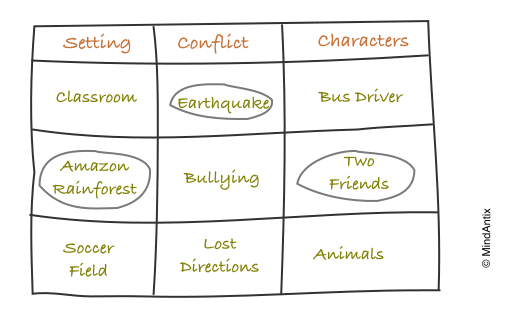Fritz Zwicky, the renowned Swiss astronomer who first inferred the existence of dark matter, was well known as an original thinker who made significant contributions in many areas of astronomy. In a profile of Zwicky, aptly called Idea Man, Stephen Maurer notes, “When Fritz Zwicky died in 1974, he was remembered as a gifted observational astronomer who had discovered more supernovae than everyone else in human history combined.” What made Zwicky so successful was that he came up with a large number of discoveries and inventions during his lifetime.
In fact, Zwicky is reported to have said about himself, “I have a good idea every two years. Give me a topic, I will give you the idea!” Zwicky invented a technique called morphological analysis, which he credits for most of his insights. He believed his technique would allow anyone to think one hundred times more efficiently. While that might seem like hyperbole, many people have since then found the technique to be a useful brainstorming tool.
While morphology had been in use in many fields of science, Zwicky extended it to include abstract concepts and ideas. Morphological analysis works by first identifying the important dimensions of the problem, which make up the variables or parameters of the model. A Zwicky Box is then constructed where each of the parameter is placed in its own column. Different values of a parameter go into separate rows for that column. Picking a cell from each column, results in picking a unique solution to the problem. By trying out different combination of cells from the table, you can quickly and systematically explore many different solutions.
Today, a Zwicky box remains a great tool that helps in coming up with several original ideas. The Idea Box technique, outlined in Thinkertoys, and used for quickly producing thousands of new design ideas is based on the same morphological technique. Zwicky Boxes have also been used for business modeling, product design and even story planning.
As an example, suppose you want to apply the morphological technique to storywriting. You can pick a few important dimensions like “Conflict”, “Setting” and “Characters” for your Zwicky Box, each of which makes a column in the table. Then, you write down all the ideas you have for each of the columns. Now, by simply picking an entry from each column, you have the raw ingredients for your original story.
In our Creative Thinking classes, we often use Zwicky Boxes to capture and explore different ideas or to create some original story lines. We found that merely juxtaposing different elements from the table triggers the brain’s associative thinking engine to find meaningful connections, which often results in some fresh ideas.
The advantage of a Zwicky Box isn’t in building the ability to think original ideas, but in systematically exploring many ideas that can lead to surprising insights. Often times the problem isn’t necessarily coming up with ideas, it’s closing in too early on a few solutions.


7 Replies to “Thinking Outside The (Zwicky) Box”
Comments are closed.